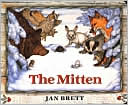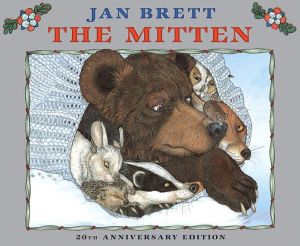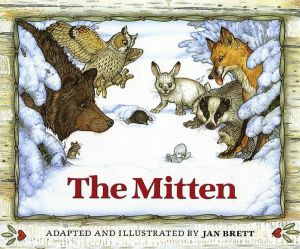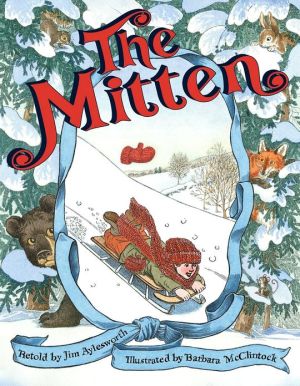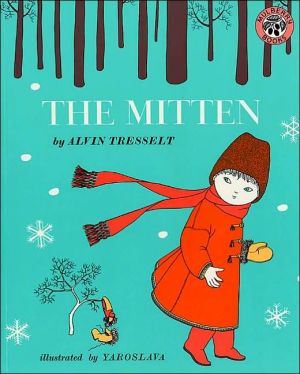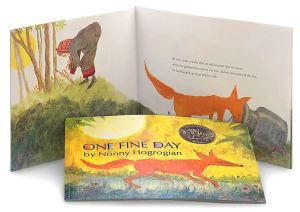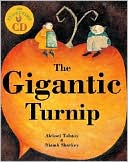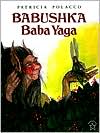Little Daughter of the Snow
Childless and sad, an old Russian man and his wife watch the village children playing in the snow. One day they decide to make their own little snow girl. To their surprise, she comes alive! But Little Daughter of the Snow soon tells them that she isn’t quite like other children — she plays outside all day and night, and eats ice porridge for breakfast. Will the couple love her enough to make her stay? This poignant version of the classic Russian tale, with atmospheric illustrations by Tom...
Search in google:
Childless and sad, an old Russian man and his wife watch the village children playing in the snow. One day they decide to make their own little snow girl. To their surprise, she comes alive! But Little Daughter of the Snow soon tells them that she isn’t quite like other children — she plays outside all day and night, and eats ice porridge for breakfast. Will the couple love her enough to make her stay? This poignant version of the classic Russian tale, with atmospheric illustrations by Tom Bower, carries a timeless message about the true value of love.Publishers WeeklyIn this abridged story from Ransome's (1884-1967) 1916 collection Old Peter's Russian Tales, an old man and woman create a "little snow girl" to assuage their loneliness. The girl, promises to "laugh and sing and play/ By frosty night and frosty day" but warns the couple "whenever I do know/ That you love me little, then/ I shall melt away again." Thus, the narrative die is cast: When a fox rescues the snow girl from depths of the forest, the couple refuses to reward the animal with the hen he requests, and the snow girl promptly "leapt into the arms of Frost, her father, and Snow, her mother," leaving the human couple behind. The heightened, often incantatory language casts a spell, transporting readers to a long ago, faraway place where wishes come true, animals talk and punishments are draconian. But the story's power is somewhat diluted by Bower's (Albert Blows a Fuse) canvas-textured paintings. The inherent cheeriness of his naif styling works well when everything is hunky-dory (e.g., when the snow girl teaches the old woman how to make ice porridge, or frolics with the human children in the village square), but the pictures fall short when it comes to communicating a sense of the snow girl's other-worldly imperiousness and charisma. Ages 5-8. (Nov.) Copyright 2005 Reed Business Information.
\ Publishers WeeklyIn this abridged story from Ransome's (1884-1967) 1916 collection Old Peter's Russian Tales, an old man and woman create a "little snow girl" to assuage their loneliness. The girl, promises to "laugh and sing and play/ By frosty night and frosty day" but warns the couple "whenever I do know/ That you love me little, then/ I shall melt away again." Thus, the narrative die is cast: When a fox rescues the snow girl from depths of the forest, the couple refuses to reward the animal with the hen he requests, and the snow girl promptly "leapt into the arms of Frost, her father, and Snow, her mother," leaving the human couple behind. The heightened, often incantatory language casts a spell, transporting readers to a long ago, faraway place where wishes come true, animals talk and punishments are draconian. But the story's power is somewhat diluted by Bower's (Albert Blows a Fuse) canvas-textured paintings. The inherent cheeriness of his naif styling works well when everything is hunky-dory (e.g., when the snow girl teaches the old woman how to make ice porridge, or frolics with the human children in the village square), but the pictures fall short when it comes to communicating a sense of the snow girl's other-worldly imperiousness and charisma. Ages 5-8. (Nov.) Copyright 2005 Reed Business Information.\ \ \ \ \ School Library JournalPreS-Gr 4-An old man and woman build a snow girl, hoping that she will come alive and relieve their sorrow at being childless. At twilight, she begins to sing and dance, promising that she will continue to "laugh and-play," unless she learns that they do not truly love her, and then she will "melt away." Their days pass happily until spring, when the snow girl becomes lost in the woods. A red fox brings her home safely, but the couple begrudges him a fat hen as his reward. Feeling that they love her less than a hen, the child melts away and returns to her parents, Frost and Snow. Taken from Ransome's Old Peter's Russian Tales (Puffin, 1975; o.p.), this folktale has been abridged and updated, making the text more concise and easier to understand. The modern language is juxtaposed with the snow daughter's songs, which have been quoted from the original (e.g., "No warm blood in me doth glow,/Water in my veins doth flow"). The textured, folk-style illustrations invest the story with new energy and depict details of traditional Russian peasant life. Cool blues and whites capture the snowy outdoors, contrasting with the warm oranges in the old people's loving home. A well-told and colorfully illustrated version of a story about love and priorities.-Suzanne Myers Harold, Multnomah County Library System, Portland, OR Copyright 2005 Reed Business Information.\ \ \ Kirkus ReviewsRansome's haunting wintertime story first appeared in Old Peter's Russian Tales (1916). Here, the storytelling is more timeless, less quirky and conversational. A childless old Russian couple longs for a daughter, so they build a girl out of snow: " 'Won't you run about like the others, little white pigeon?' cried the old woman." The snow girl does indeed come to life, singing a merry song that bears a warning: "But whenever I do know / That you love me little, then / I shall melt away again." The family is happy until one day when Little Daughter gets lost in the woods. She's rescued by a fox, but when he demands a plump hen in exchange for the girl, the old couple tries to outfox the fox with a rather mean trick. Disappointed that she's not worth even a hen to her new-found parents, Little Daughter makes good on her promise and disappears forever. Bower's canvas-textured, stylized, folk art-style illustrations add color, humor and playfulness to this engaging, though morally muddled tale of love found and lost. (Picture book. 5-8)\ \

